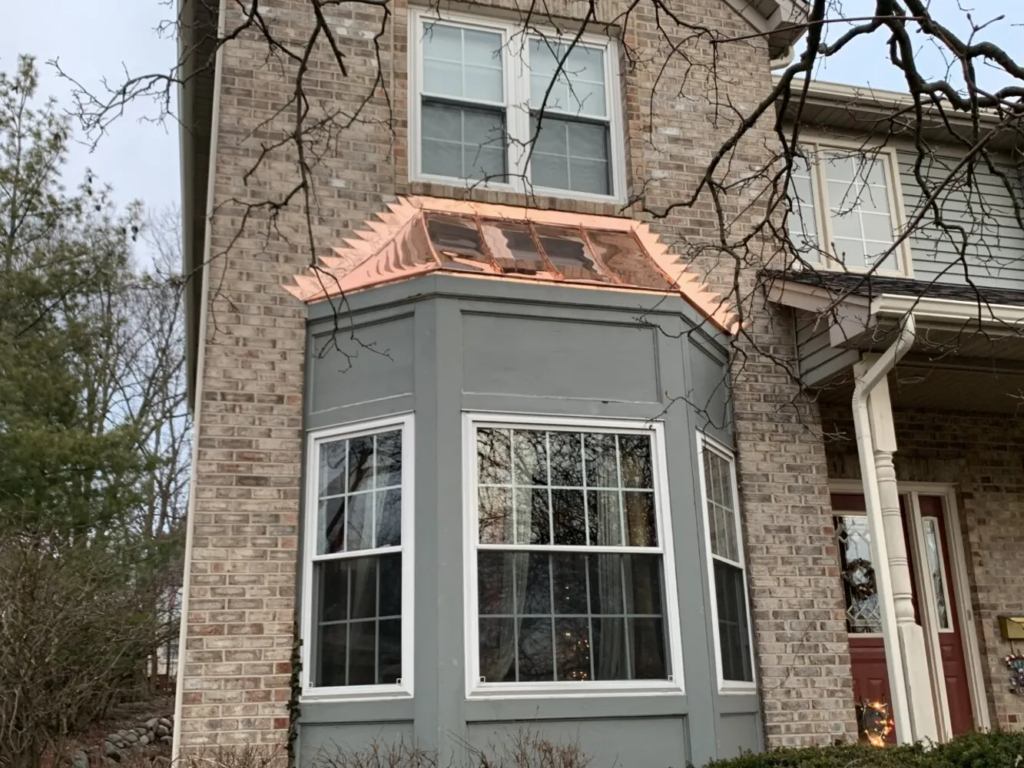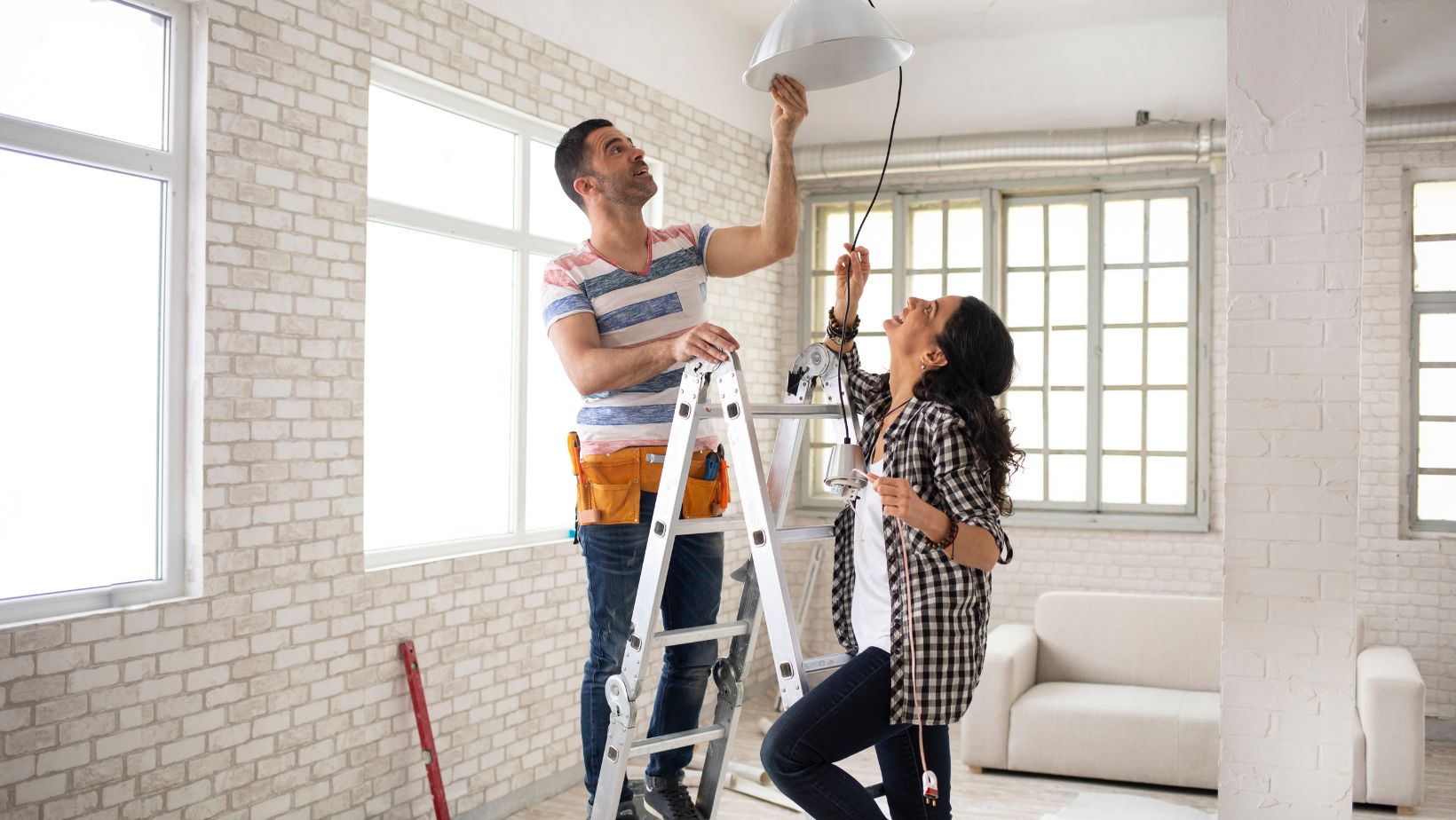Copper awnings and bay windows have long been a symbol of elegance, durability, and timeless style. Whether used over windows, doors, or in the form of ornate bay window coverings, copper adds undeniable value and curb appeal to any home. But with the rise of faux copper alternatives—such as aluminum or steel painted to mimic copper—the question arises: Is it worth investing in real copper, or are faux options just as good? In this article, we’ll explore the key differences between real copper and faux copper awnings, including their longevity, appearance, maintenance, weather performance (especially in the Midwest), and cost. If you’re located in Illinois or Indiana, where homes are subject to extreme weather changes, choosing the right material for your exterior upgrades is more than just a visual decision—it’s an investment in long-term protection and performance.
1. What Are Copper Awnings & Bay Windows?
True copper awnings and copper bay windows are made from sheets of high-quality copper, custom fabricated to fit your home’s architecture. These installations are not just decorative—they provide real protection from rain, snow, and sun while developing a beautiful patina over time that makes each piece one-of-a-kind.
Popular copper applications include:
- Door awnings
- Window awnings
- Bay window roofing
- Entry canopies
- Decorative accents on dormers or porches
2. What Are Faux Copper Awnings?
Faux copper awnings are typically made from aluminum, galvanized steel, or even plastic, and then finished with a copper-colored paint, powder coating, or vinyl wrap. While they may look like copper at first glance—especially from a distance—the differences become evident over time.
Faux options are popular among budget-conscious homeowners or commercial projects where cost-cutting is prioritized. However, the aesthetic payoff and performance over the years often fall short of real copper.
3. Appearance: Patina vs Paint
One of the biggest advantages of real copper is its natural aging process. As copper is exposed to the elements, it slowly transforms from shiny orange-gold to a stunning blue-green or bronze patina. This color evolution creates a rich, organic texture that faux materials simply cannot replicate.
Faux copper awnings, on the other hand, rely entirely on surface paint. Over time, paint chips, fades, or discolors—especially under harsh sun or in areas prone to freeze-thaw cycles like Illinois. Once damaged, faux copper awnings often look patchy and artificial, reducing your home’s visual appeal.
4. Durability in the Midwest Climate
In regions like Illinois and Indiana, weather can be especially tough on exterior materials. Winters bring heavy snow and ice, while summers often include strong UV exposure, high humidity, and occasional hail or windstorms.
Copper naturally resists corrosion, mold, and insect damage, making it ideal for the unpredictable Midwest seasons. Faux copper awnings, especially those made from steel, may rust over time or deteriorate if not properly maintained.
5. Cost vs. Long-Term Value
There’s no doubt: Real copper costs more upfront. But its long-term value is undeniable.
- Initial Cost (per linear foot):
- Copper: $40–$60+
- Faux Copper: $15–$25
While faux materials may seem more affordable initially, consider this:
- Real copper never needs repainting
- It can last 3–5 times longer
- It adds more value to your property (especially with high-end buyers)
- It creates a one-of-a-kind aesthetic that improves with age
Over 20–30 years, you may end up replacing faux copper multiple times—making real copper the more cost-effective option in the long run.
6. Maintenance Needs
Real copper requires virtually no maintenance. Many homeowners allow the natural patina to develop. Those who prefer the original shine can apply a sealant or polish occasionally.
Faux copper requires regular upkeep:
- Paint touch-ups or full repainting every few years
- Inspections for rust or bubbling paint
- Cleaning to avoid discoloration from weather exposure
If you’re looking for a low-maintenance, set-it-and-forget-it solution, real copper is unmatched.
7. Environmental Considerations
Copper is a sustainable, recyclable material. It can be reused or reclaimed, and its production has a relatively low environmental impact. Faux copper, particularly plastic-based or coated materials, are less environmentally friendly and often end up in landfills after their useful life.
8. Curb Appeal and Property Value
Ask any real estate agent: Copper sells. Homes with authentic copper awnings, bay windows, or details are often seen as premium properties. The material signals craftsmanship, care, and quality—something buyers are willing to pay for.
Faux copper doesn’t carry the same prestige and may not add much value when selling your home.
Conclusion: Which Should You Choose?
If you’re renovating your home and want to balance aesthetics, longevity, and value—real copper is the clear winner. Especially in areas like Illinois and Indiana, where weather can be extreme, copper’s durability and beauty make it the smart investment.
Faux copper awnings might work for short-term solutions or budget-limited projects, but they won’t deliver the same lasting results or pride of ownership.




More Stories
4 Simple Home Changes that Have High Returns on Investment (ROIs)
Effective Tips for Home Buyers in San Antonio
Zopalno Number Flight: Unlock Hassle-Free Air Travel with Real-Time Updates